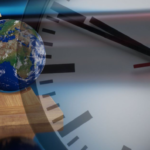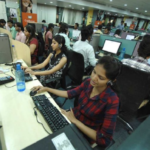Varicose veins are a condition characterized by veins that often appear enlarged, twisted, and discolored, notusually on the legs. While typically not life-threatening, this ailment sometimes leads to discomfort and complications. Understanding what varicose veins are, their causes, and their symptoms can help in recognizing the condition and exploring potential treatment options.
What Are Varicose Veins?
Varicose veins develop when veins near the surface of the skin become swollen and twisted. They are most frequently seen in the legs and ankles but can occur in other areas as well. Veins carry blood from different parts of the body back to the heart. To do this efficiently, veins have one-way valves that prevent blood from flowing backward. When these valves weaken or fail, blood pools in the veins, causing them to stretch, enlarge, and sometimes bulge outward from the skin.
The appearance of these veins is usually easy to recognize. They are often dark blue, purple, or red in color and may appear rope-like or bulging. While they are generally a cosmetic concern, in some cases, they can cause physical discomfort and indicate underlying circulatory issues. If left untreated, this condition may lead to complications such as ulcers, bleeding, or the formation of blood clots. These situations generally require medical attention.
What Are the Causes and Symptoms of Varicose Veins?
Several factors can contribute to the development of varicose veins. One of the primary reasons is damaged or weak vein valves, which disrupt normal blood flow. There are also certain risk factors that increase the likelihood of these valve issues arising:
- Age: The risk of this condition increases with age as vein walls and valves naturally lose elasticity over time.
- Gender: Women are more likely to develop this condition, partly due to hormonal changes during pregnancy, menopause, or from taking hormone-related medications.
- Family History: A genetic predisposition can increase a person’s chances of developing the condition.
- Prolonged Sitting or Standing: Occupations or lifestyles that involve long periods of sitting or standing can lead to reduced circulation, contributing to venous issues.
- Obesity: Excess body weight places added pressure on the veins, making them more prone to becoming enlarged.
- Pregnancy: During pregnancy, the increased volume of blood and pressure on the abdomen can lead to the formation of these veins.
While the visual appearance of these veins is often the first sign, other symptoms may occur. These symptoms can vary in severity and may include:
- Aching or Pain in the Legs: Many individuals experience feelings of heaviness, throbbing, or aching in the legs, especially after long periods of standing or sitting.
- Swelling: Swelling in the lower legs, ankles, or feet may occur due to fluid buildup.
- Itching: The area surrounding these veins may feel itchy or irritated.
- Cramps or Restlessness: Some individuals experience leg cramps or restlessness, particularly at night.
- Skin Changes: Over time, skin around these veins may thicken, harden, or take on a discolored or shiny appearance.
Find Out More Concerning Varicose Veins and Their Treatment
Varicose veins are a manageable condition, with many treatment options available to address both cosmetic and medical concerns. For individuals who suspect they may have this condition or are experiencing any symptoms, it may be helpful to seek professional guidance. While understanding the causes and symptoms is an advisable first step, consulting with a healthcare provider can provide insights into tailored treatment options and management strategies.







